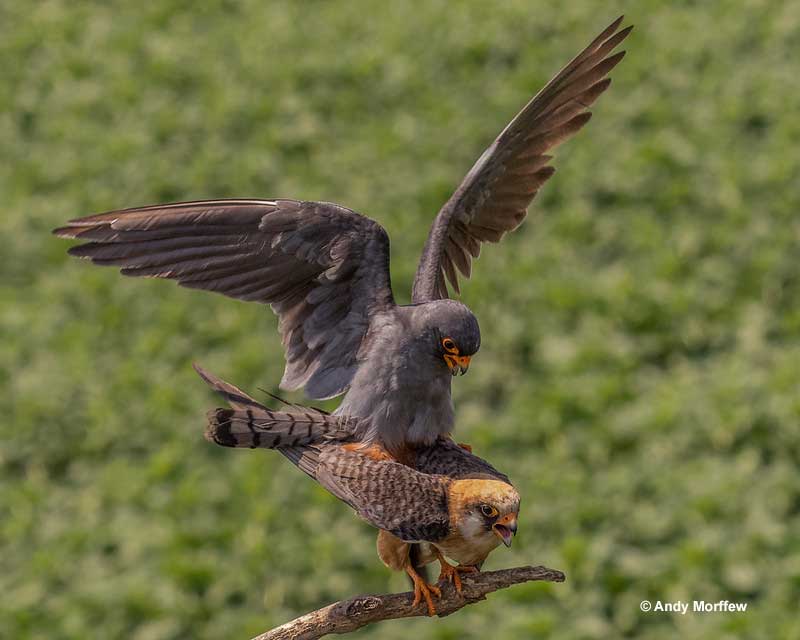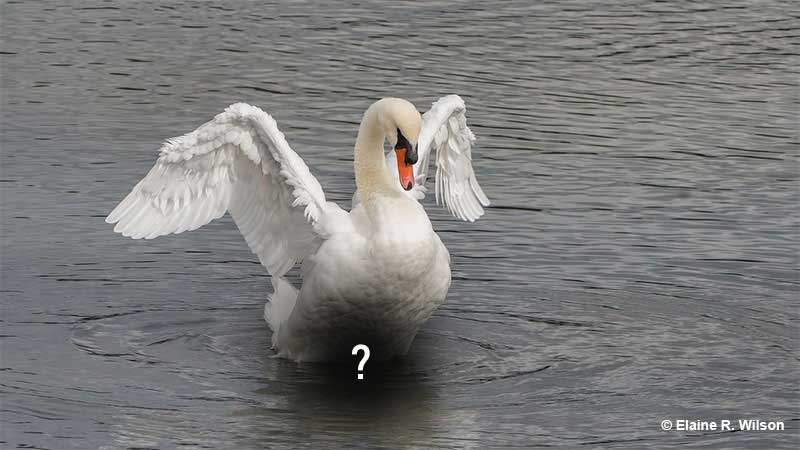
All life has to start somewhere.
In animals, it usually happens when a male and a female of the same species meet and mate. The enthusiasm triggered by sex hormones is not enough – there are compatible male and female sex organs to support the procreative ideas.
Copulation is the most common mating strategy in animals. The males have copulatory organs – e.g., penises – that they insert into female vaginas or similar openings to transfer sperm into their oviducts, leading to internal fertilization of the eggs.
Despite that, most birds don’t have penises and mate by swift “cloacal kiss” – bringing their swollen cloacas together, allowing sperm to transfer into the female oviduct. Except for the 3 percent of avian species who have a penis.
Here comes everything you wanted (and didn’t want) to know about bird sex and bird penises.
On this page
How Do Birds Mate?
Charles Darwin defined the penis as a primary sexual trait indispensable for reproduction.
However, birds object to that – because the males of 97% of species don’t have penises and reproduce just fine. Instead, both sexes have cloacas.
After elaborate courtship, the male will shortly mount a female, and the pair will rub their cloacas together. If she cooperates and positions herself at a right angle, the fertilization will likely be successful.
Additionally, many birds are monogamous – the female chooses a mate for the entire breeding season or even for life and mates with him consecutively.
Still, Mother Nature had to make things a bit twisted, at least for some. In around 3 percent of bird species, males have penises, and mating happens via actual copulation.
But that’s far from the end of the bird-ding-dong story – because bird penises are a weird world of their own.
The Rare Examples
Penis, or a copulatory organ, is not a widespread phenomenon in birds. In the Aves (bird) class, only a few members have members – around 3% of all species.
Besides being rare, bird penises are unique in several characteristics.
- Bird penises don’t always have a crucial role in ejaculation and sperm transfer. For some penis-owning bird males like cassowaries, ejaculation happens at the base rather than the tip of the male appendage.
- Scientists think that the real role of a bird’s penis is to show fitness and dominance to other males and stimulate the females.
- Bird erections happen due to the actions of the lymphatic system and not because of blood, like in mammals.
- In bird species exhibiting promiscuity and high male mating competition, penises tend to be larger. Conversely, in pair-boded birds, penises tend to be smaller.
- Copulation in birds lasts for a very short time when compared with mammals and reptiles. It happens in a few seconds or less, although there are exceptions.
Let’s look at some prominent examples of bird class members with a member.
Ducks
Drakes (male ducks) are probably the bird kingdom’s most notorious avian phallus owners.
Duck penises are elongated and corkscrewed. When I say elongated, I mean really elongated. In most species, the duck’s penis accounts for 50% of their body length.
However, the record holders are male Argentinian Lake Duck, having a penis that can be up to 42 centimeters long when fully erected and elongated. In comparison, their whole bodies are 36-40 cm in length.
So, why do drakes have such weird penises? Most ducks, and especially the common Mallards, are highly competitive when it comes to mating. Mates fiercely compete with each other to father the ducklings, while females have plenty of methods to ensure that only the most capable become their babies’ fathers. This is where the story of a sexual evolutionary arms race unfolds.
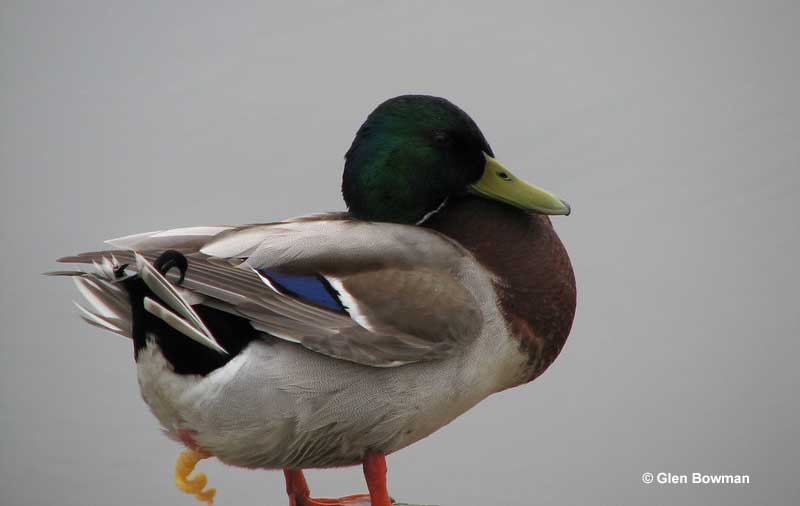
The female duck’s most powerful weapon of selection is the equally-winding vagina. Actually, it was the shape of the female duck vagina that dictated the evolution of the corkscrewed organ in males.
The vaginas seem designed to make it harder for the males to fertilize eggs, with “dirty tricks” such as winding in the wrong direction (counter-clockwise vs. clockwise) and featuring multiple dead-ends. Ultimately, this is the way for the physically weaker and smaller duck hens to have control over who fathers the ducklings.
The males “make up” for it by evolving longer and longer penises and aggressive mating approaches. It is an extreme example of the so-called antagonistic co-evolution.
We find similar penis structure and function in geese and swans, although neither the length of the organ nor the sexual behaviors are so extreme. This is at least partially due to their strong pair bonds and decreased competition between the males.
Duck penis ‘explosive eversion’ (lasting one-third of a second!)
Ostriches
All ratites except Kiwi have a penis in one form or another. The most famous of rarities – the African ostrich – has an elongated penis which, unlike the duck and goose members, has a typical phallic shape.
The lymph engorges the organ, causing an erection when the birds are ready to mate.
The male carefully mounts his mate and inserts the appendage into her cloaca. Then, (brace yourself), he makes his little dance moves by spreading his wings and swaying from side to side (it’s quite a tacky Casanova victory dance, isn’t it).
Besides mating, the ostrich penis is visible when the bird is defecating.
Related: How similar are ostriches and emus really?
Ostrich Aussie cousins Emus also have a penis, but smaller. Since Emus form strong pair bonds, they prove the theory that large and extreme bird copulatory organs evolve due to competition.
Cassowaries
In Cassowaries, both sexes have phallic structures called pseudo-penises. Their falseness comes from the fact that they are not connected to sperm ducts or any reproductive organs.
The male’s organ rests in an invaginated cavity, in the position of a turned-out finger of a glove. During copulation, it swells and protrudes and then “invaginates” the female’s pseudo-penis, pushing it inside-out.
The ejaculation happens from the cloaca at the base of the appendage rather than on its tip, like in the case of an actual penis.
The female’s phallic appendage is smaller and often referred to as the clitoris. However, it is unclear if it has anything to do with arousal and pleasure, like its namesake structure in other animals. Given the fact that an adult cassowary can kill a human with its mighty kick, it is reasonable that scientists are not overly enthusiastic about testing any hypotheses.
Fowl (with a focus on Cracids)
From a language perspective, it’s a bit ironic – male chickens, aka cocks don’t have developed penises (likewise, there is no ‘pecker’ in a male woodpecker).
They have only a tiny structure with a groove where the penis is supposed to be. It can help direct the sperm in the right direction, but it’s not a copulatory organ. In fact, chickens have been the model organisms to study how birds lost their penises in the course of evolution (see below).
However, there is one extraordinary galliform out there that has reclaimed its evolutionary right to a penis. Cracids are a group of rare, enigmatic, and endangered galliforms from the South American jungles. Males have copulatory organs – penises, and it is likely that these ‘re-evolved’ after being missing in ancestral species.
How Did Birds Lose Their Penises?
It still puzzles scientists why such a large animal group with internal fertilization would ditch a penis as an evolutionary solution to secure insemination. There are many theories about it – it might be because of flying efficiency, avoiding the burden of STDs, or making mating quicker to avoid predation.
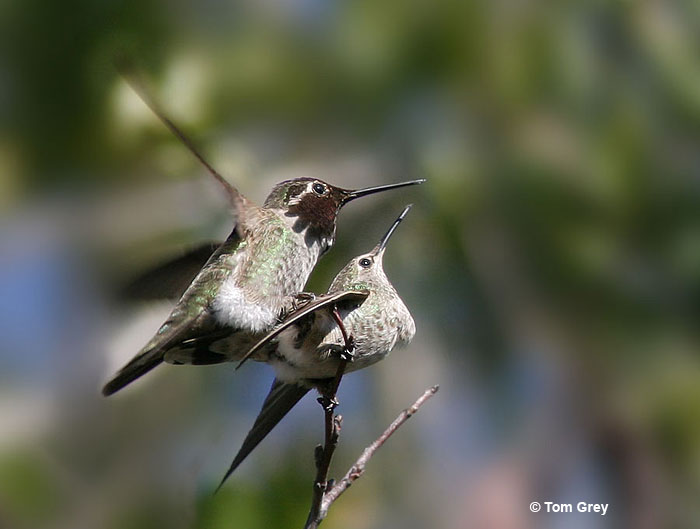
For most birds, mating is a question of seconds.
Although it’s still unclear why this evolutionary penis ban happened, at least now we know how it happened.
In all bird embryos, the penis begins developing normally before abruptly degrading and nearly disappearing. That signals that the penis has been ‘lost’ through evolution.
A change in the regulation of the BMP4 protein causes this regression by starting a cascade of programmed cell death events in the embryonic bird phallus. In birds that got to keep their penises, like ducks, geese, and emus, there is no change in the protein regulation, so the penis continues to develop uninhibited.
Frequently Asked Questions
Do birds get erections?
Male birds with penises do get erections. The most notable example might be an ostrich because the erected penis is visible, protruding under the tail when the pair is about to mate.
Another famous example is the male duck’s “explosive” erection. Due to their nearly ridiculous length, drakes keep their penis flaccid and tucked inside their cloaca. However, before copulation, the penis swells at high speed (a third of a second), unfolding at its full length, which can be several tens of centimeters.
Do birds mate aggressively?
In most birds, mating is a swift and a bit clumsy business. After a lot of courtship, the cloacal rubbing takes place in only a few seconds after a male briefly mounts the female while trying hard to maintain his balance, with no aggression involved. Even in rare birds with penises and true copulation, mating is usually not rough.
However, there are exceptions to the rule – few but memorable. For example, the sex lives of ducks and other waterfowl make most people cringe in horror.
Group ‘rapes’ (forced copulations) are common among Mallards and their domestic hybrids and some other wild ducks. Males are always perpetrators, but their targets can be male or female – and alive or dead. A couple of illustrative facts: researchers estimated that around 10 percent of female ducks drown during forced breeding attempts.
As for domestic birds, drakes, and especially Mallard hybrids, can kill chickens with their aggressive (and deeply misguided) breeding attempts.
The aggressive mating strategies likely originate from fierce competition between the males.
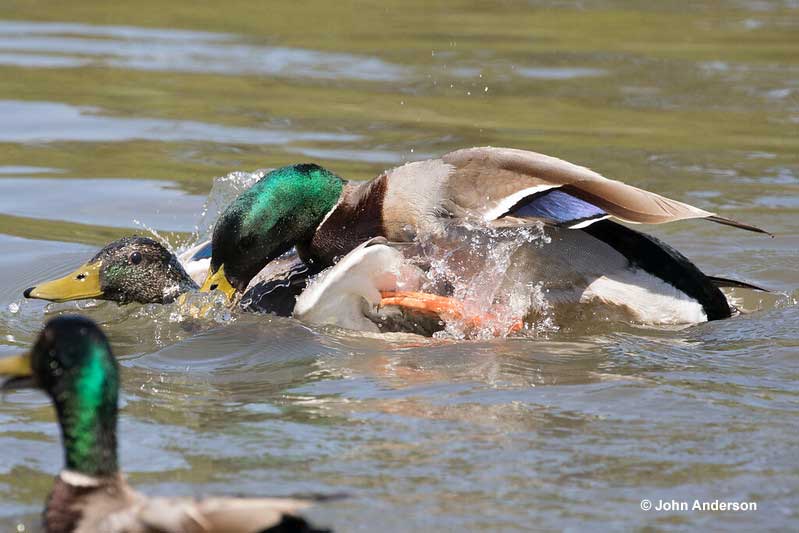
What does a bird’s cloaca look like?
From the outside, the bird cloaca is inconspicuous because the feathers hide it – you’ll notice a small dent in the plumage just beneath the tail.
Under the features, there is a vent in the form of a horizontal slit – the cloacal orifice. In both sexes, the cloaca is a joint opening for excretion (urine and feces all-in-one) and reproduction (mating and egg-laying in females).
However, the cloacal morphology is slightly different in females and males. In most birds, the male cloaca is raised and points upwards or forward, with a crease between the opening and the abdomen. The female cloaca usually points backward without a crease. During insemination, it gets inverted.
Do birds have clitorises?
Birds lack real analog to a clitoris – in fact, they are the only land animal group to lack clitorial structures. The exceptions are only two species: the Cassowary and the Buffalo Weaver.
In Cassowaries, as described earlier in the article, the name ‘clitoris’ is not really precise – pseudo-penis is more true to the fact. Also, the function of “the clitoris” is not entirely clear.
On the other hand, the male Buffalo weavers (Bubalornis niger) also have a false penis, but it undoubtedly has a clitoris-like role in stimulation. Like any other pseudo-penis, the “stiff rod of connective tissue” of the Buffalo weaver is not connected to reproductive organs. Still, it generates an orgasm-like state in males after prolonged copulation – a phenomenon unrecorded in any other bird. Lucky weaver.
Do birds feel pleasure?
Although bird genital openings lack elaborate information present in higher mammals, birds seem to feel at least some sexual arousal and pleasure.
The phenomenon is easily noticed in captive parrots who often “masturbate” by rubbing their cloacal area against their toys and even their human hands and other body parts. Wild birds reported to masturbate include wild Spectacled Parrotlets, Northern Lapwings, and American Avocets.
The only bird observed to reach a true orgasmic state is the Buffalo Weaver. As the paper describing the peculiar behavior says: “In the final stages of copulation, males appeared to experience an orgasm during which the male’s wing beat slowed to a quiver and his entire body shook; with his leg muscles apparently in spasm, his feet clenched hold of the female and drew her towards him.” Also, the same research suggests that orgasm is necessary for ejaculation in these weavers.


